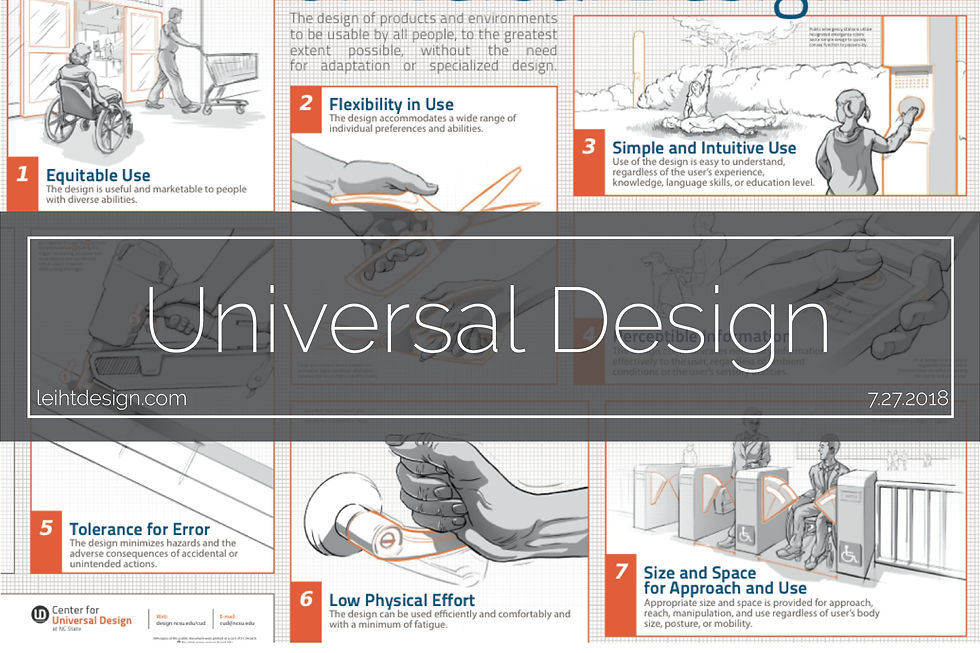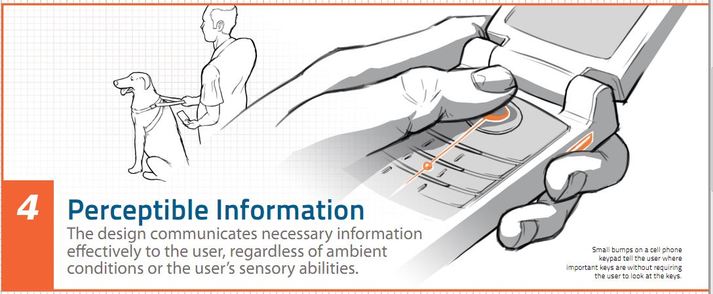Overview of Universal Design
- Jessie Patton
- Aug 3, 2018
- 2 min read

Welcome to our design blog!
Today, we will briefly discuss the concept of universal design and why it is important.
Universal Design is critical in order for a space to be equally experienced by the most people. In some environments, there are certain messages, signals, or actions that are required by an occupant in order for successful use of an object or space. Designers, developers, and researchers apply universal design methodologies to their products in order for the end user to be successful. Today, we will learn about what universal design is and how it plays a part in our everyday lives.
What is universal design?
Universal design is the process of creating products that are accessible to people with a wide range of abilities, disabilities, and other characteristics. Products designed within these parameters accommodate individual preferences and abilities, and communicate necessary information effectively. They can also be manipulated, approached, and reached regardless of an individual's body size, posture, or mobility.
Where did universal design come from?
Universal design was explored and formulated in 1997 by a group of architects, product designers, engineers, and environmental design researchers led by Ronald Mace at North Carolina State University. Together, the group established the 7 Principles of Universal Design that are used to guide designers, developers, and engineers today. Keep reading to find out what those 7 principles are.
Why is it important?
Universal design minimizes the need to additional construction, alterations, technology, and other adjustments after the product or space has been built. This is because universal design ideology is used throughout the design process - before anything permanent is done. The 7 Principles for Universal Design, as mentioned above, can be seen in many aspects of our daily life. These 7 info-graphics, from Universal Design 101, will walk you through the principles:
Universal design is necessary to create spaces and products that we come in contact with everyday. Many successful designers and engineers work hard to create spaces and products that we can experience without having to question their design.




















